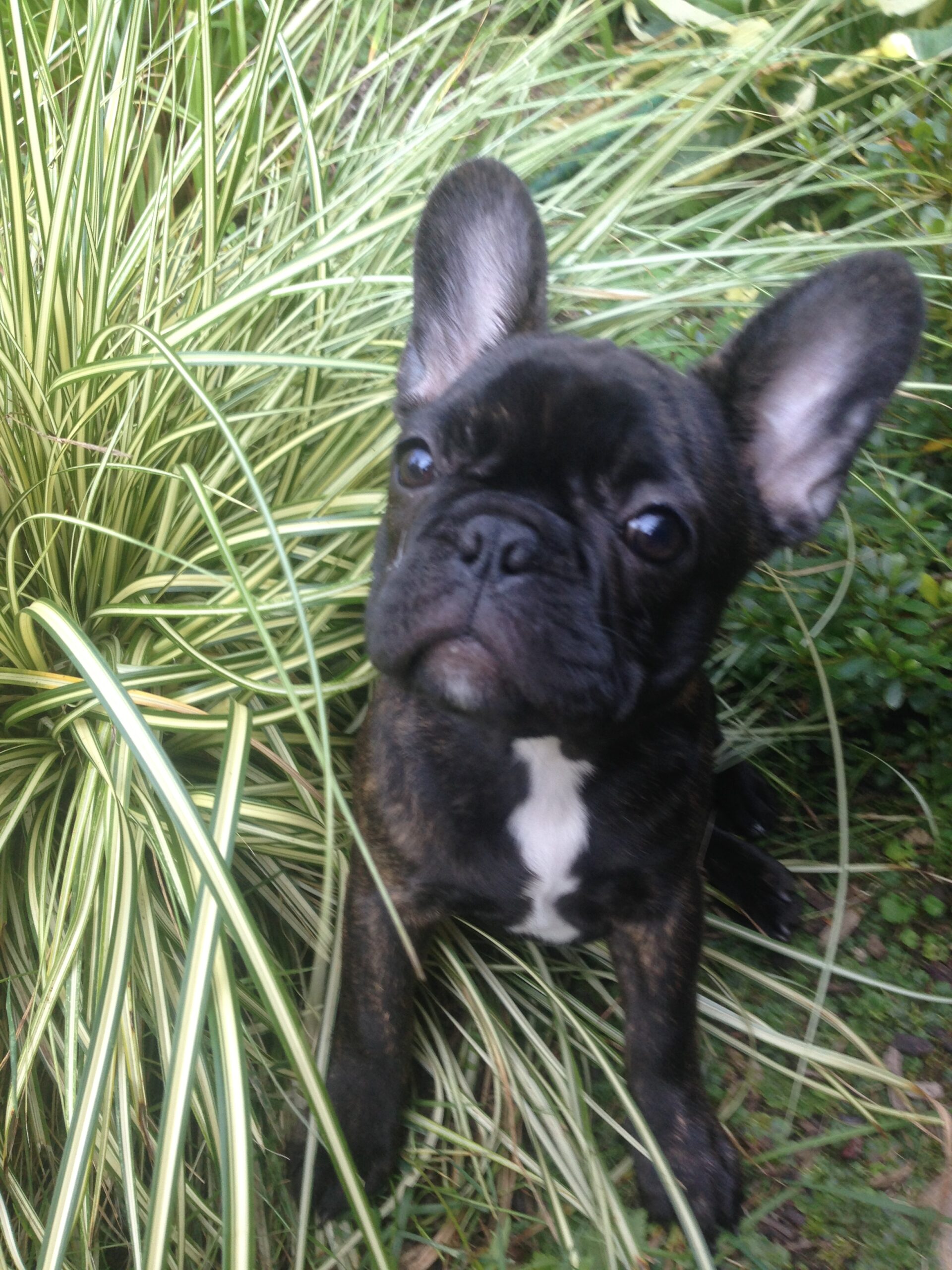Housetraining is one of the most important things to teach a puppy, or a new adult dog. Whether you want your new puppy to use a potty pad indoors or go outside on the grass, he must learn the difference between the surface you want him to use and any other surface or location. We do this by simply controlling his choices and rewarding the ones we like. Start this process the moment you bring him home!
What does housetraining look like? (It’s the same for a new adult dog!)
House training, or potty training, is really teaching an animal to “wait” or to “hold it” when they feel the initial urge, and to only relieve themselves when they are in the approved place. Dogs can “go” on the grass or potty pads. Cats can potty in litter boxes. Some parrots are trained to wait until they are over a trashcan. Either on a schedule or by giving some sort of signal that results in the availability of the approved potty area, or a combination of both – your dog can be reliably house trained. If you have a doggie door or use potty pads, the approved area can be available at all times, and they dog just need to go there.
Reinforce the behavior you want
- Every time the pup urinates or defecates in the right place, he gets a treat.
- Give the treat so the pup relates it directly to the act of peeing or pooping.
- Timing: give the treat just as the puppy is finishing up his potty business. Watch for him to start raising his body back up from peeing or pooping.
- Location: Have the pup on a leash so that you’re right next to him. Be ready to pop the treat in his mouth right away, whether he using grass outside or a potty pad. Yes, a leash in the house! You have to control where the pup uses the bathroom. If he’s not on a leash, you may get him to the potty pad but he can move off of it to actually do his business. Then he’s learning to potty where you don’t want him to!
- Don’t add any other behaviors to the housetraining process. Don’t ask your puppy to sit or come to you. He gets the treat simply for doing his potty business where you want him to, and immediately as he’s finishing the process.
- Reinforcing a puppy’s potty training behavior of peeing/pooping in the right place is how you get an adult dog who “asks” you to let him outside when he needs to go!

Prevent the behavior you don’t want
- Whenever your puppy is with you, she needs to be on a leash – even in the house. When you can’t have her on a leash and watch her closely, she needs to be in her confinement area – crate or kennel or other confined area where she can nap or chew something.
- Leash: When you’re home with her, keep your new pup on a leash and with you at all times. If she’s with you and your eyes are on her, she won’t have a chance to wander off to explore the house. You will notice the signs of her needing to eliminate before she pees or poops on the carpet. You can drop the leash and let it drag, but let it be a reminder to watch her closely to prevent poor potty choices!
- Crate or Kennel: When you’re not home, put your pup in his confinement area. You need to already be working to create an association for him that it is a pleasant resting place. Make sure he’s peed and pooped before you leave. Don’t ask him to stay in there without relieving himself for too long. As a rule of thumb, 8 week old puppies can physically “hold it” for an hour or two. By the age of 3 months, they can physically wait up to 4 hours – but they may not do so, unless you’ve been carefully house training for a while. Remember, you have to help your puppy develop that skill to stretch the time he’ll wait.
- Potty Schedule: Take your new pup to the assigned potty area (outside or potty pad) every hour when you first arrive home with her. This routine will help you become accustomed to when and how often she needs to go. You’ll also start to recognize what her behavior looks like when she needs to go. As you progress with housetraining, you can adjust the schedule to her needs. Together, you and the puppy will establish a schedule. You’ll probably want to take her out as soon as she wakes up in the morning or after a nap, pretty soon after eating, and after a few minutes of playing, for sure.
- Feeding: Feed your pup on a schedule according to his age. This will make it easy to organize a potty schedule, too. Puppies up to the age of 4 to 6 months of age usually need to eat 3 times a day. After that, they can move to a twice-a-day feeding schedule.
- Water: Do not limit your puppy’s water availability for the purpose of housetraining, except that you don’t need to leave water available for him while he’s asleep at night. You can’t be sure when he’ll be thirsty, so he needs to have water available all day.
One very important thing:
Sometimes, you take the puppy outside and she just doesn’t seem to need to potty. In fact, this will happen a lot and you must have a plan to help you through this. Sometimes she just doesn’t need to go, and that’s just reality. However, she will need to go in just 5 minutes, so you can go back in but don’t take the leash off at this point.
Watch her closely at this point. Whether you see any signs or not, take her back outside in 5 minutes. No potty behavior yet? Wait, or go back inside for another 5 minutes. This is the danger zone! This is the time when the puppy is most likely to suddenly feel the urge and potty on the floor! It’s also when some effective learning is happening.
Will your puppy learn to potty on the grass, or on the floor indoors? This is when your observation skills and responses need to be at their best so you are sure to have the puppy on the grass when she needs to go. Puppies don’t get much “notice” that they need to potty – their little bodies are not fully developed yet.
It’s really that simple!
You do have to make an effort. Your puppy probably doesn’t care much where he pees or poops, but you do! So you have to do the work of prevention and reinforcement to make it happen the way you want.
The reinforcement (treats) after the puppy pees or poops where you want him to is what really does the training. Everything else is so you can get that behavior to happen correctly so you can reinforce it.

